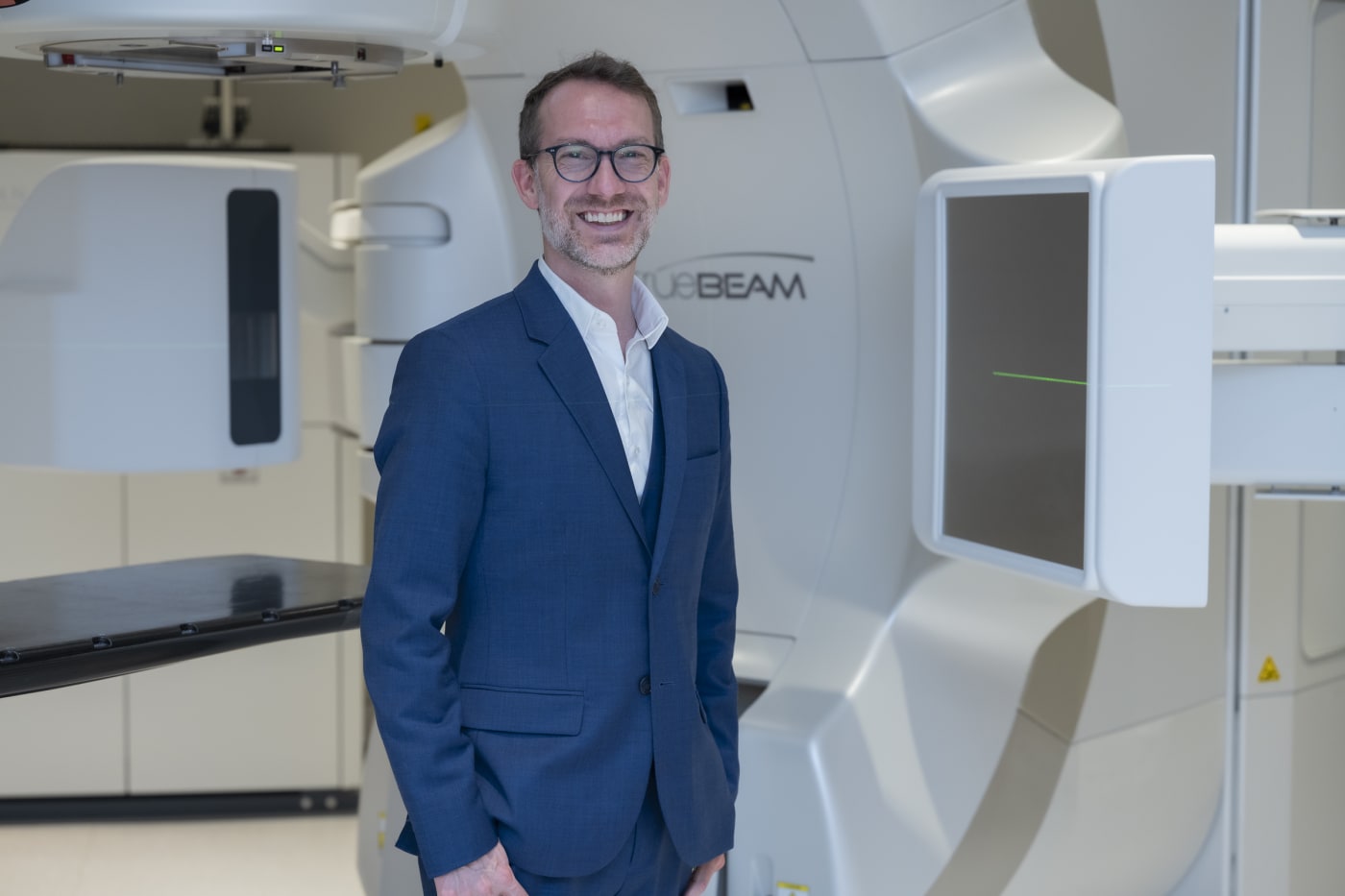
Radiation Therapy
Support BC Cancer’s World-Leading Radiation Therapy Research
For more information, contact Rhea Siu, Director, Development, Vancouver. Please consider donating today.
Half of all patients diagnosed with cancer will require radiation therapy, a treatment that uses high-energy radiation (externally via beams or internally via radioactive particles) to destroy tumour cells. Some patients may only require one treatment, others need 30 or more consecutive sessions, five days a week for one to eight weeks.

"This results in British Columbians whose survival depends on timely access to nearly 167,000 radiation therapy visits each year in our province."
— Dr. Devin Schellenberg, provincial lead for radiation oncology at BC Cancer
Radiation therapy can be used to cure cancer, reduce the likelihood of recurrence or to help relieve symptoms such as pain to improve a patient’s quality of life. It can be administered on its own or in combination with other treatment such as surgery, chemotherapy and hormone therapy.
All radiation is very specific to each patient’s individual cancer. And due to the complex nature of the treatment, it is only administered at the six BC Cancer centres in the province — meaning families facing cancer who live great distances from Vancouver, Surrey, Abbotsford, Victoria, Kelowna or Prince George need to contend with added obstacles such as extended time off work, travel and accommodation in order to receive the life-saving treatment.
Research and clinical trials in radiation therapy not only advance more precise, targeted treatments in fewer doses to reduce harmful side effects, they increase access to cutting-edge care to patients across the province.

"Unlike drug-based trials, which are often supported by the company producing the treatment, it’s been challenging to obtain funding for radiation clinical trials. In fact, radiation research — especially clinical trials with a focus on reducing number of treatments and toxicity — relies almost entirely on donor funding."
— Dr. Paris-Ann Ingledew, head, Department of Radiation Oncology at BC Cancer – Vancouver
B.C.-Led Innovation in Radiation Therapy
Thanks to generous donors, radiation therapy at BC Cancer has seen exciting leaps forward in treatment delivery and technology over the past decade.
In 2023, patients receiving cancer care in Kelowna were the first in Canada to receive advanced radiation therapy using Ethos, a technology that uses artificial intelligence (AI) to adapt to daily changes in the shape and position of cancer tumours, allowing clinicians to better target treatment and dramatically spare healthy tissue from the side effects of radiation.
On the Path to Even More Precise Radiation Therapy
Groundbreaking studies in Stereotactic ablative radiotherapy (SABR) — a relatively new radiation treatment that delivers high-dose, precision radiation to tumours in fewer doses — are showing game-changing potential in reducing treatments to just one or two sessions. The benefits of SABR include fewer side effects, through the reduction of damage to surrounding healthy tissue, and less travel for treatment for patients in rural or remote regions.
Thanks to donor support, BC Cancer – Prince George, led by Dr. Rob Olson, has gained international recognition in precision radiation research over the past decade. The BC Cancer Foundation is currently fundraising $2.2 million to support SIMPLIFY, an international Phase 3 trial being led from B.C.’s North.
The trial, looking at the curative rates and side effects of a single SABR treatment versus multiple, across several cancer types, is building on previous successful SABR studies, and will be available at all BC Cancer centres ensuring patients across the province have an opportunity to participate in the cutting-edge trial.
Another $500,000 Foundation campaign is underway to fuel ADAPT-25, an innovative clinical trial in prostate cancer at BC Cancer’s Victoria and Surrey centres that is using artificial intelligence (AI) to compare the effectiveness of two doses of SABR versus the standard five, in an effort to help minimize side effects.
These studies have enormous potential to offer unprecedented access to radiation treatment for patients in just one or two doses compared to the 30-35 courses of traditional radiation treatments that would have been prescribed just a few years ago.